Description
Latin: Viburnum dentatum
Zones: 3-8
Other common names: Arrowwood Viburnum
Mature Height/spread: 6 -15 ft high with equal spread. Medium growth rate of 13-24″ per year.
Soil / Climate: Tolerates a wide variety of soils and climates. Because Arrowwood will tolerate wet soils, they are a good choice for areas of the yard that are too wet for many other plants.
Notes: Leaves are dark green in the summer, and reddish to yellow in the fall. Spring flowers are white. Fruit is dark purple to black.
Wildlife: These bushes attract many different types of butterflies. They also provide the necessary cover to encourage bird activity in the yard, because they form dense thickets. The wild birds will also eat the berries. Attracts hummingbirds, butterflies and the hummingbird moth.
Cold Stream Farm supplies Arrowwood Viburnum shrubs which are grown as bare root seedlings and transplants and sold both wholesale and retail with no minimum order.
Additional information on Viburnum dentatum can be found on the link: USDA / NRCS PLANTS Database.

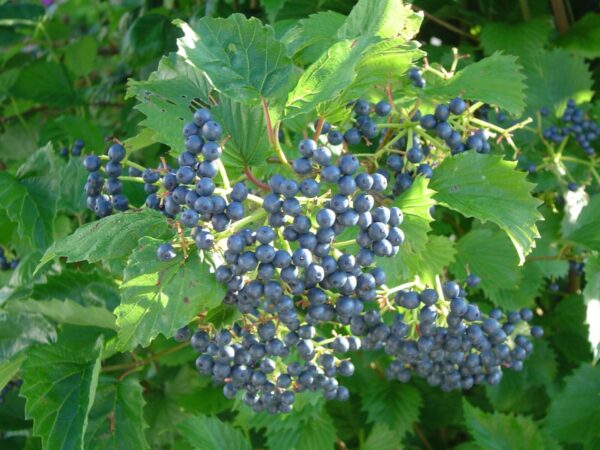
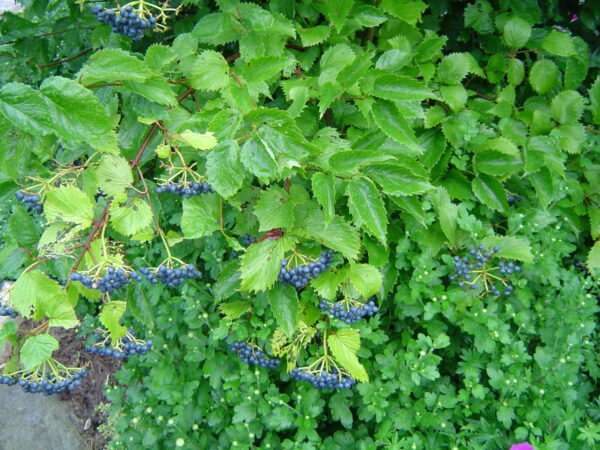
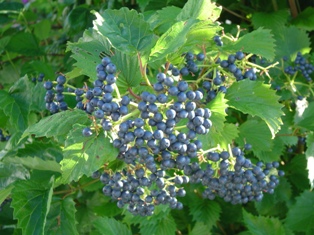
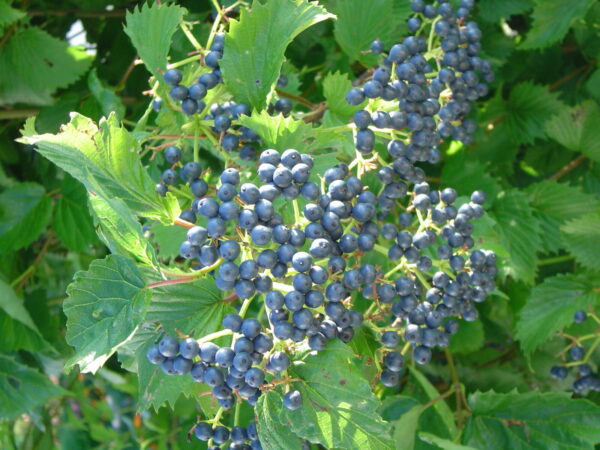
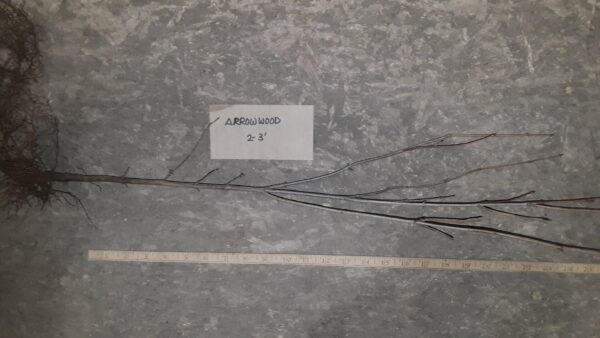
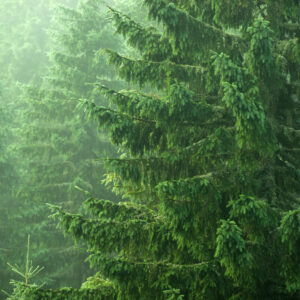
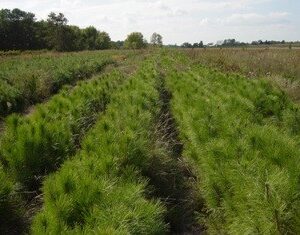
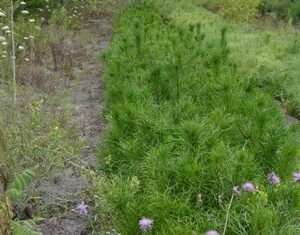
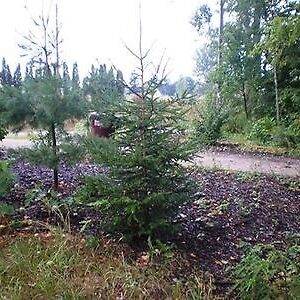
Diane –
There are at least 8 different varieties of Arrowwood Viburnum. Which one is this?
http://www.hort.uconn.edu/plants/detail.php?pid=524
Possible Varieties Include:
‘Christom’ (Blue Muffin™) – A new selection that may hold great promise, this is a true dwarf that grows densely to 4′ tall and wider. It blooms heavily with good set of deep blue fruit. It may be the best selection of this adaptable native for smaller gardens.
‘Emerald Lustre’ – This plant is a selection of Viburnum bracteatum, which is closely allied or identical to V. dentatum. Its most notable feature is the glossy dark green foliage and its performance in warmer zones from 6 south. The fruit are abundant and colored purple-black, while the fall foliage is yellow-bronze. It is probably best reserved for use in warmer coastal areas.
‘Moonglow’ – A selection out of Pennsylvania, this cultivar is notable for its larger leaves which are glossy dark green. The fruit appear slightly later than other selections and are a bit larger.
‘Morton’ (Northern Burgundy®) – This selection blooms in late June and produces a prolific crop of blue-black fruit. The fall color is burgundy and the plant grows a bit larger than other selections, to 12′ tall and wide.
‘Ralph Senior’ (Autumn Jazz®) – Selected for its excellent shape and form, this plant grows 10′ to 12′ tall and 8′ to 10′ wide. It has an upright, vase-like shape with fall color that is a mix of yellow, red and purple.
‘Patzam’ (Pathfinder™) – This is a new cultivar that grows upright to 6′ tall and 4′ wide. It has handsome foliage that is glossy dark green and serrated. It may be useful where a smaller plant is needed.
‘Perle Bleu’ – This new selection is well-named, for it features ample production of round, blue fruit. It may be useful in attracting bird life, plus this 10′-12′ tall shrub is attractive in its own right.
‘Synnestvedt’ (Chicago Lustre®) – Noted for its nice glossy, deep green foliage on an upright rounded shrub, this plant grows 8′ to 10′ tall and wide. The fall color is reddish purple and the selection blooms slightly later than the species. It is hardy to zone 5.
Jenny C. Rosene –
To Diane: Those you listed are cultivars. This listing is very likely for the true native species. If you are planting a native garden, you want the plants without the cultivar names (in quotation marks).
Ethan Swanson –
Yes, the names mentioned above are all cultivar varieties that are “improved” upon or selected from wild stock that shows unique qualities like higher yield, different color, taste if taking edible, etc. This is the wild version and is correctly listed
Natalie Cataldo –
Very happy with my shrubs. Only 4 days after planting and half of them have green buds already